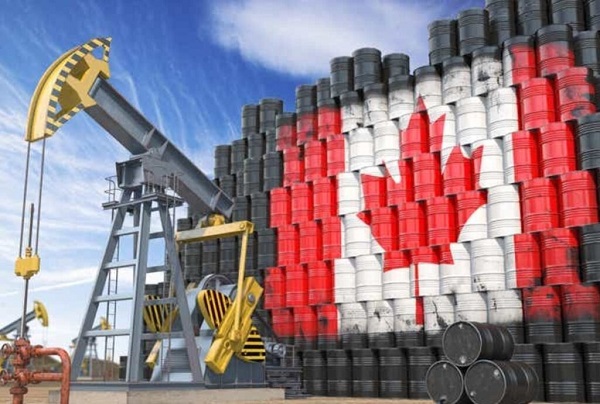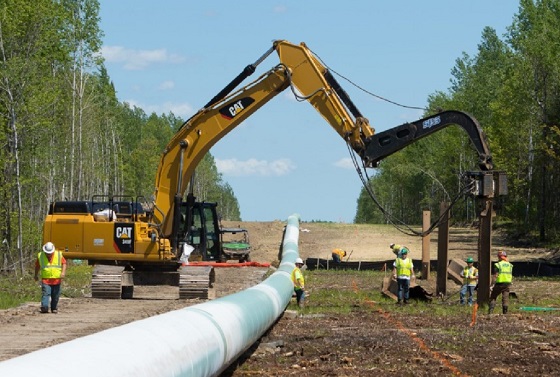Business
Ottawa foresees a future of despair for Canadians. And shrugs

This article supplied by Troy Media.
 By Lee Harding
By Lee Harding
A government report envisions Canadians foraging for food by 2040. Ottawa offers no solutions, just management of national decline
An obscure but disturbing federal report suggests Canadians could be foraging for food on public lands by 2040.
Policy Horizons Canada released the dire forecast on Jan. 7, 2025, in a report entitled Future Lives: Social Mobility in Question. It went largely unnoticed at the time, but its contents remain deeply concerning and worth closer examination.
Policy Horizons Canada is a little-known federal think-tank within the public service that produces long-term strategic foresight to guide government decision-making. Though not a household name, its projections can quietly shape policies at the highest levels. It describes itself as the government’s “centre of excellence in foresight,” designed to “empower the Government of Canada with a future-oriented mindset and outlook to strengthen decision making.” Its current head is Kristel Van der Elst, former head of strategic foresight at the World Economic Forum.
The report warns that the “powerful promise” that anyone can get an education, work hard, buy property and climb the social and economic ladder is slipping away. Instead of a temporary setback, the authors argue, downward mobility could become the norm. They liken Canada’s future to a board game with “more snakes than ladders.”
“In 2040, upward social mobility is almost unheard of in Canada,” the report states. “Hardly anyone believes that they can build a better life for themselves, or their children, through their own efforts. However, many worry about sliding down the social order.”
While these scenarios aren’t firm predictions, foresight reports like this are intended to outline plausible futures. The fact that federal bureaucrats see this as realistic is revealing—and troubling.
Post-secondary education, the report suggests, will lose its appeal. Rising costs, slow adaptation to labour market needs, long program durations and poor job prospects will push many away. It predicts that people will attend university more to join the “elite” than to find employment.
Home ownership will be out of reach for most, and inequality between those who own property and those who don’t will drive “social, economic, and political conflict.” Inheritance becomes the only reliable path to prosperity, while a new aristocracy begins to look down on the rest.
The gap between what youth are told to want and what they can realistically expect will widen, fuelling frustration and apathy. As automation and artificial intelligence expand, many traditional white-collar jobs will be replaced by machines or software. “Most people (will) rely on gig work and side hustles to meet their basic needs,” the report warns.
This leads to one of the darkest predictions: “People may start to hunt, fish, and forage on public lands and waterways without reference to regulations. Small scale agriculture could increase.”
The authors don’t propose solutions. Instead, they ask: “What actions could be taken now to maximize opportunities and lessen the challenges related to reduced and/or downward social mobility in the future?”
That question should concern us. Policymakers aren’t being asked how to prevent the collapse of social and economic mobility but how to manage its
fallout. Are those envisioning Canada’s future more interested in engineering a controlled implosion than fostering hope and opportunity?
Yes, artificial intelligence will bring challenges and change. But there is no excuse for despair in a country as rich in natural resources as Canada. Besides, the 2021 income data used in the report predates even the release of the first version of ChatGPT.
If policymakers are serious about restoring upward mobility, they must prioritize Canada’s resource economy. Ports, pipelines, oil and gas development, and mining are essential infrastructure for prosperity. When these sectors are strangled by overregulation, investment dries up—and so do jobs. The oil patch remains one of the fastest paths from poverty to wealth. Entry-level jobs in the field require training and safety courses, not four-year degrees.
Similarly, post-secondary education doesn’t need to be as expensive or time consuming as it is now. We should return to models where nurses could earn certification in two years instead of being funnelled into extended university programs. And if governments required universities to wind down defined benefit pension plans, tuition would fall fast.
Unfortunately, there’s a real risk that policymakers will use reports like this to justify more wealth-killing socialism. A home equity tax, for example, might be pitched to avoid future tensions between renters and homeowners. Such a tax would require Canadians to pay an annual levy based on the increased value of their home even if they haven’t sold it. These policies don’t build wealth—they punish it, offering temporary relief in place of lasting progress.
Unless we choose a more sensible path, the controlled demolition of Canada will continue.
Lee Harding is a research fellow for the Frontier Centre for Public Policy.
Troy Media empowers Canadian community news outlets by providing independent, insightful analysis and commentary. Our mission is to support local media in helping Canadians stay informed and engaged by delivering reliable content that strengthens community connections and deepens understanding across the country
Banks
Scrapping net-zero commitments step in right direction for Canadian Pension Plan

From the Fraser Institute
By Matthew Lau
And in January, all of Canada’s six largest banks quit the Net-Zero Banking Alliance, an alliance formerly led by Mark Carney (before he resigned to run for leadership of the Liberal Party) that aimed to align banking activities with net-zero emissions by 2050.
The Canada Pension Plan Investment Board (CPPIB) has cancelled its commitment, established just three years ago, to transition to net-zero emissions by 2050. According to the CPPIB, “Forcing alignment with rigid milestones could lead to investment decisions that are misaligned with our investment strategy.”
This latest development is good news. The CPPIB, which invest the funds Canadians contribute to the Canada Pension Plan (CPP), has a fiduciary duty to Canadians who are forced to pay into the CPP and who rely on it for retirement income. The CPPIB’s objective should not be climate activism or other environmental or social concerns, but risk-adjusted financial returns. And as noted in a broad literature review by Steven Globerman, senior fellow at the Fraser Institute, there’s a lack of consistent evidence that pursuing ESG (environmental, social and governance) objectives helps improve financial returns.
Indeed, as economist John Cochrane pointed out, it’s logically impossible for ESG investing to achieve social or environmental goals while also improving financial returns. That’s because investors push for these goals by supplying firms aligned with these goals with cheaper capital. But cheaper capital for the firm is equivalent to lower returns for the investor. Therefore, “if you don’t lose money on ESG investing, ESG investing doesn’t work,” Cochrane explained. “Take your pick.”
The CPPIB is not alone among financial institutions abandoning environmental objectives in recent months. In April, Canada’s largest company by market capitalization, RBC, announced it will cancel its sustainable finance targets and reduce its environmental disclosures due to new federal rules around how companies make claims about their environmental performance.
And in January, all of Canada’s six largest banks quit the Net-Zero Banking Alliance, an alliance formerly led by Mark Carney (before he resigned to run for leadership of the Liberal Party) that aimed to align banking activities with net-zero emissions by 2050. Shortly before Canada’s six largest banks quit the initiative, the six largest U.S. banks did the same.
There’s a second potential benefit to the CPPIB cancelling its net-zero commitment. Now, perhaps with the net-zero objective out of the way, the CPPIB can rein in some of the administrative and management expenses associated with pursuing net-zero.
As Andrew Coyne noted in a recent commentary, the CPPIB has become bloated in the past two decades. Before 2006, the CPP invested passively, which meant it invested Canadians’ money in a way that tracked market indexes. But since switching to active investing, which includes picking stocks and other strategies, the CPPIB ballooned from 150 employees and total costs of $118 million to more than 2,100 employees and total expenses (before taxes and financing) of more than $6 billion.
This administrative ballooning took place well before the rise of environmentally-themed investing or the CPPIB’s announcement of net-zero targets, but the net-zero targets didn’t help. And as Coyne noted, the CPPIB’s active investment strategy in general has not improved financial returns either.
On the contrary, since switching to active investing the CPPIB has underperformed the index to a cumulative tune of about $70 billion, or nearly one-tenth of its current fund size. “The fund’s managers,” Coyne concluded, “have spent nearly two decades and a total of $53-billion trying to beat the market, only to produce a fund that is nearly 10-per-cent smaller than it would be had they just heaved darts at the listings.”
Scrapping net-zero commitments won’t turn that awful track record around overnight. But it’s finally a step in the right direction.
Business
The U.S. Strike in Iran-Insecurity About Global Oil Supply Suddenly Makes Canadian Oil Attractive

From Energy Now
By Maureen McCall
The U.S. strike on three nuclear sites in Iran is expected to rattle oil prices as prices change to include a higher geopolitical risk premium.
Anticipated price rises range from a likely rise of $3-5 per barrel forecast by Reuters to predictions of a “knee-jerk” reaction price spike with Brent crude, currently at $72.40, possibly rising to $120+ in a worst-case scenario, according to JPMorgan.
Whatever the choice of action Iran will take in response- it is creating fears of reprisals striking U.S. oil infrastructure. Impacts on the Strait of Hormuz are feared as a senior Iranian lawmaker was quoted on June 19th as saying that the country could shut the Strait of Hormuz as a way of hitting back against its enemies.
In a recent interview, ExxonMobil CEO Darren Woods said there is sufficient supply in the global oil market to withstand any supply disruption to Iranian exports.
“There’s enough spare capacity in the system today to accommodate any Iranian oil that comes off the market,” Woods told Fox News “The bigger issue will be if infrastructure for exports or the shipping past the Strait of Hormuz is impacted.”
The Strait of Hormuz is considered the world’s most important oil chokepoint, according to the Energy Information Administration (EIA). Iran voted late Sunday to shut down the Strait through which about 20% of the world’s daily oil supply flows. The resulting oil supply risk leaves countries contemplating their options as they look for more long-term capacity.
We could be facing a return to the identification of “Conflict Oil”, a term Ezra Levant first coined in his book “Ethical Oil: The Case for Canada’s Oil Sands” to describe oil-producing countries with dismal human rights records, such as Iran. Conflict oil would now signify oil sourced from areas of the world subject to political conflict, instability and supply disruption. Levant used the term originally to argue that Canadian Oil Sands production should be considered a more ethical alternative to oil from countries with oppressive regimes. However, the argument could now be made that oil supply and pricing from conflict-free countries like Canada would be more reliable. Canadian oil could come into focus as conflict oil once again becomes a concern.

Katarzyna (Kasha)Piquette, CEO, of Canadian Energy Ventures (CEV), an organization formed to connect Canada’s energy with Europe’s growing needs in the face of the Russian-Ukrainian conflict, foresees dramatic changes in global energy trade.
“The consequences of the US strike on Iran are a potential game-changer, not just in terms of pricing, but in how countries think about long-term energy security,” Piquette said. “In the short term, Canada can help stabilize supply to the U.S. and Europe as geopolitical risk premiums surge. But the long-term impact may be even more profound: countries in Asia are likely to deepen ties with stable, non-Middle East suppliers like Canada. This is an opportunity to position Canadian energy as a cornerstone of energy security in a more divided world, and we must act strategically to expand our infrastructure and secure that future.”
Piquette says CEV is hearing directly from buyers in Europe and Asia, at least half a dozen countries, who are urgently looking to secure long-term contracts with reliable, conflict-free suppliers.
“Canadian oil is back in focus, and not just for ethical reasons. With the Trans Mountain expansion now operational, we can access Asian markets directly through the BC coast, while the U.S. The Gulf Coast remains a viable path to Europe. Yes, transportation adds cost—but buyers today are willing to pay a premium for stability. This is Canada’s moment, but it requires Ottawa to deliver on its promises: we need regulatory certainty, investment in infrastructure, and export capacity that matches global demand.”
Maureen McCall is an energy professional who writes on issues affecting the energy industry.
-

 Alberta1 day ago
Alberta1 day agoCalls for a new pipeline to the coast are only getting louder
-

 Alberta1 day ago
Alberta1 day agoAlberta pro-life group says health officials admit many babies are left to die after failed abortions
-

 espionage1 day ago
espionage1 day agoFrom Sidewinder to P.E.I.: Are Canada’s Political Elites Benefiting from Beijing’s Real Estate Reach?
-

 Business1 day ago
Business1 day agoCanada’s economic pain could be a blessing in disguise
-

 Business1 day ago
Business1 day agoRhetoric—not evidence—continues to dominate climate debate and policy
-

 Energy1 day ago
Energy1 day agoEnergy Policies Based on Reality, Not Ideology, are Needed to Attract Canadian ‘Superpower’ Level Investment – Ron Wallace
-

 conflict1 day ago
conflict1 day agoU.S. cities on high alert after U.S. bombs Iran
-

 Business2 days ago
Business2 days agoHigh Taxes Hobble Canadian NHL Teams In Race For Top Players




